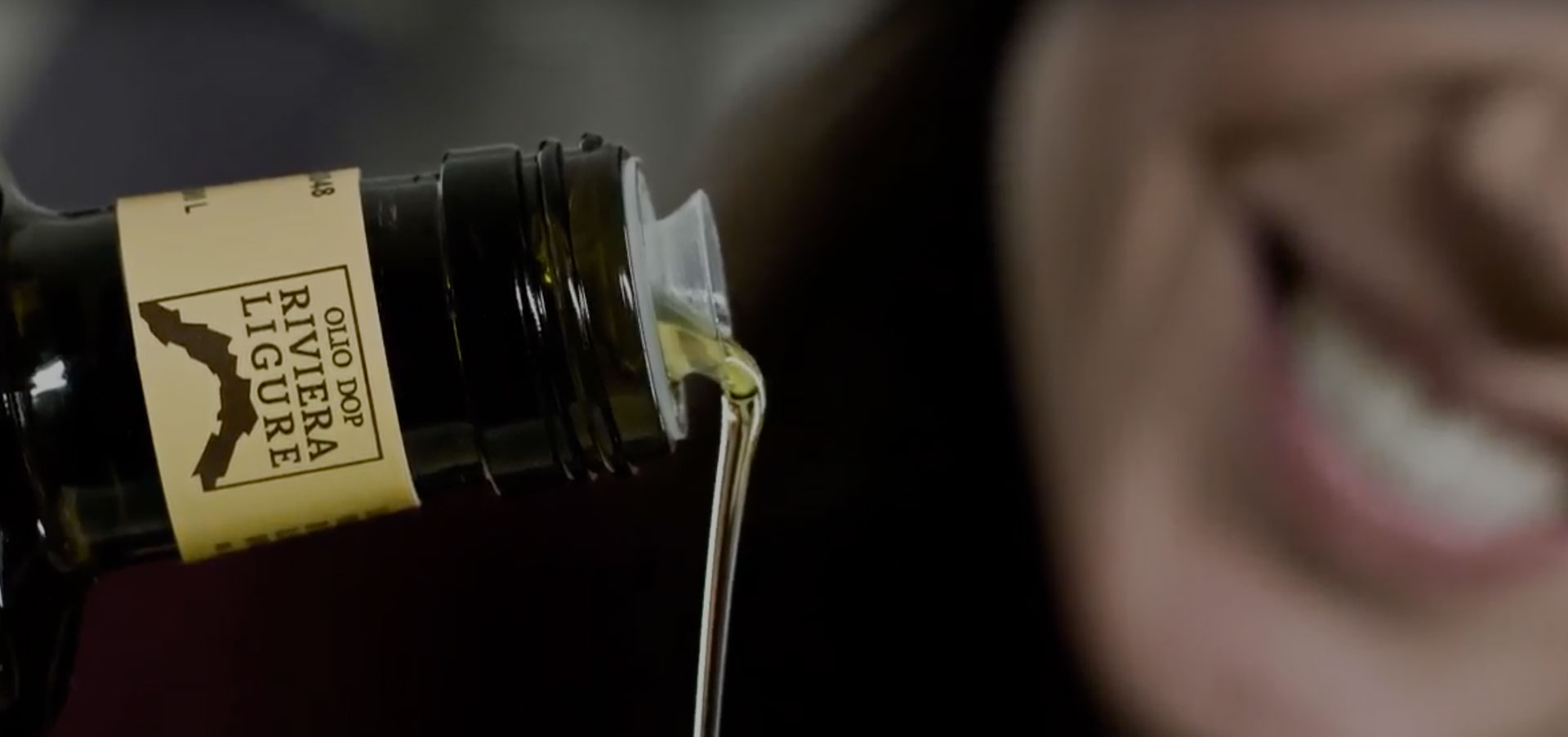We pruned and fertilized the olive trees and cleared the ground. We were anxious about the adverse weather conditions and feared a parasite invasion.
It’s October at last: the time has come to reap the reward of our efforts and great passion.
Olive harvesting in Liguria is extremely difficult: the olive terraces are nearly always very narrow. Mechanization is limited to a minimum. It is important to reduce the workload of the operators and speed up the harvest operations. For this reason, we have lowered or thinned out the leaves of the trees and electric olive tree shakers have been used for a few years now.
The harvest time depends heavily on the exposure and altitude of the land. The higher the altitude, the longer it takes for the olives to ripen. On sites facing southwards (“domestic” sites as they are called in western Liguria), ripening starts earlier.
In general, to obtain a good oil content and therefore a better yield, a certain number of dark-coloured olives (that is, olives ranging in colour from green to black with all intermediate shades of colour) should be present on the branches of the trees.
On our olive grove, the olives ripened earlier than last year. In addition, the trees do not bear a large quantity of olives. It is risky to wait as the strong winds of Liguria could result in a large number of product dropping to the ground.
Every effort is made on the olive groves of the Ligurian Riviera to obtain the best possible quality: there are no fixed nets under the trees and a rapid-moving harvest system is therefore used.
A team of five pickers was organized with relatively short nets broad enough, however, to cover one level of the terrace and part of the one below. This is why the nets are gradually moved forwards.
The olives are thus harvested quickly, they have the advantage of having recently been picked off the tree and there is a saving in labour costs, above all for farmers that have a considerable amount of land to manage.
To remove the olives from the branches, use is made of mechanical harvesters. They are rods made of a light, elastic material that can be extended with sticks at their ends driven by an electric motor connected to a battery recharged on a daily basis. The action of these rakes in the foliage make the olives drop from the trees.
The olives harvested are transferred from the nets into open plastic crates with a capacity of about 20 litres.
Crates have been used by olive growers for about ten years to keep the olives cool and well aired.
It is easy to calculate the amount of grapes harvested: in a day and a half’s work, we collected 787 kilograms of olives, which corresponds to 63 measures of the unit traditionally adopted in Liguria (the “quart”). Once taken to the oil-press, the yield was 154 kilograms of oil equivalent to a percentage of 19.5 %. This is quite a favourable percentage considering this year’s early harvest. It is one of the moderately positive aspects of a year that has been difficult. As may be expected, the smaller amount of fruit on the trees normally corresponds to a better yield.
At the end of the day, this year’s olive harvest was equivalent to less than half that of last year. The past campaign was however exceptional. Considering the subsequent weather trend, the result can be considered satisfactory also due to the excellent pruning job done and support provided for fruit setting.
| Operations | Costs (net of VAT) |
| Cost of harvesting 787 kg of olives | 700.00 |
| Cost of pressing 787 kg of olives | 156.10 |
| TOTAL (NET OF VAT) | 856.10 |
- The harvest
- Not one less
- The fall
- All together
- Suggestion
- We are
- Transport crates
- The crate
- Olives and crates
In the past, harvesting used to be a very long, difficult and tiring activity and we are still close to the past. Some farmers still knock the olives off the trees with rods made of chestnut or hazel wood (called “trappe”) or bamboo, which is lighter but also more fragile and not very flexible. Up to the end of the Second World War, olives were picked by hand, one by one, by hundreds of women coming from the inland area of Liguria, Piedmont and Emilia (called “Sciascieline” or “Montagnine”). Use was also made of large sheets of fabric: up to about fifty years ago, the tents left by the Germans retreating from Italy were still used. For a certain period of time, a strange tool with a handle and cylinder for piercing the olives on the ground and dragging them away was on sale. A solution that reduced the excessively high labour costs but severely damaged the olives. Plastic nets finally started to be used just over forty years ago. The early ones made of nylon ended up twisted around the branches at the first Ligurian gale. Since then, nets of all sizes and with all degrees of weather resistance and ease of handling have been produced. They are however expensive. Fixed nets sewn together are used in many places in Liguria but even this entails purchasing a sewing machine that is anything but cheap.












